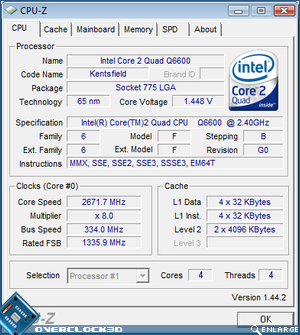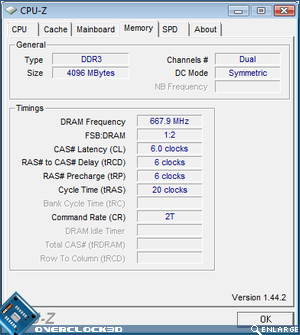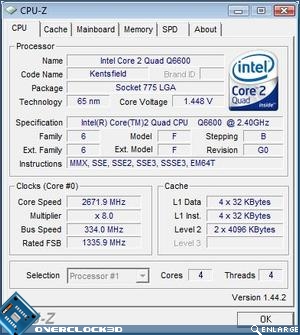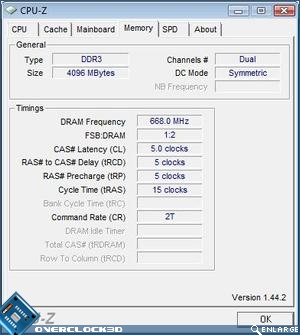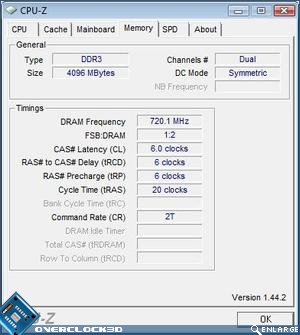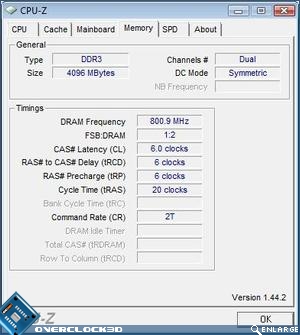Crucial Ballistix PC3-10600 (DDR3-1333) 4GB Kit
Â
Test Setup
Â
The Ballistix kit was put through its paces coupled with the following hardware:
Â
Â
Testing consisted of the following benchmarking programs:
Â
Synthetic Memory Subsystem
• Lavalys Everest 4.0
• SuperPI Mod 1.4
• Lavalys Everest 4.0
• SuperPI Mod 1.4
3D Benckmarks & Games
• 3DMark05
• Unreal Tournament 3
Â
Â
Results – Speed and Timings
Â
As with all the memory kits that pass through the OC3D Labs, the Crucial Ballistix was tested at stock speed and timings . The kit ran out of the box without a hint of trouble on the P5E64, with absolutely no tweaking. This was maintained during a 1 hour OCCT stress test. While this might seem humdrum it’s a good start, as some kits struggle to run at their rated speeds – especially ones with 4GB capacity.
Â
Â
Â
After breathing a sigh of relief that the modules worked without a hitch at stock settings. It was time to move on to the good stuff. First up was finding the tightest timings at stock clocks.
Â
Â
As you can see from the CPU-Z screenshots above, the kit did quite well indeed. Managing to stay stable at timings as tight as 5-5-5-15. Quite an admirible result for a 4GB kit. Next up was highest frequency attainable at stock timings (and voltage).
Â
Â
Maintaining stock timings and voltage the memory remained OCCT stable until 720Mhz. Considering that this is a 4GB kit this is an impressive result. Showing that it’s now possible to have quick and large amounts of DDR3. Interestingly, while the kit wasn’t OCCT stable at anything over the DDR3-1440 shown, it would still pass a 3Dmark run a little higher. The last test was the highest frequency at relaxed timings and increased voltage.
Â
Â
Â
With the voltage set to 2.0, the Ballistix managed to pass both both SuperPi and 3Dmark tests at 800Mhz. An extra .1v was required to stabilise the OCCT test however. Adjusting the timings made no difference to the highest frequency obtainable with this kit, and while at 2.1v anything so much as 5mhz over the 800mhz mark proved fruitless.
Â
Let’s head over the page for the benchmark results…




